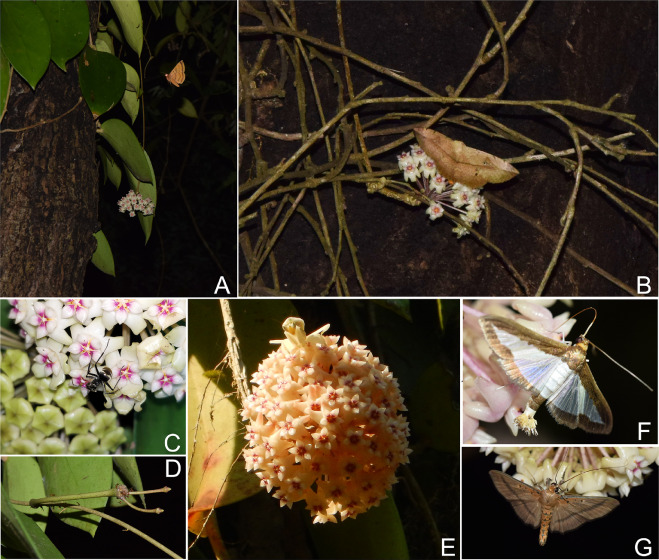
Hoya, with around 300 species, is the largest genus in Asclepiadoideae tribe Marsdenieae, in the family Apocynaceae. Hoya species produce white flowers, strong nocturnal fragrance, and abundant nectar. The pollination of two Hoya species has been studied previously, but little is known about the specific nature and interactions between flower morphology, pollinators, and their environment.
In a study published in Flora, researchers from the Xishuangbanna Tropical Botanical Garden (XTBG) investigated the pollinators of H. pottsii (spontaneous and epiphytic, growing on several cultivated and subspontaneous trees in the garden) by capturing flower visitors during the evening and night.
The researchers checked pollinators for pollinaria attachment as well as their location on the body and how many pollinia were missing, which is indicative of pollination effectiveness. They then estimated pollinator strength by using wing length as a proxy and measured guide rails and compared with Hoya carnosa.
Furthermore, they performed experiments with living pollinators, hand pollination with severed moth legs and tools were explored to understand the fine details of such elaborate processes.
They found that Hypopyra vespertilio was the most effective at both carrying and depositing the pollinaria of Hoya pottsii in Xishuangbanna. Erebus esphesperis, a larger and stronger moth than Hypopyra vespertilio was not as effective in H. pottsii.
Moreover, Colobopsis leonardii ants and Hymenopus coronatus praying mantis also carried H. pottsii pollinaria, but only one ant inserted one pollinium. H. pottsii guide rail may have adapted to smaller moths by facilitating the insertion of the pollinia.

Pollination of Hoya pottsii. (Images by Sven Landrein)

86-10-68597521 (day)
86-10-68597289 (night)

52 Sanlihe Rd., Xicheng District,
Beijing, China (100864)

